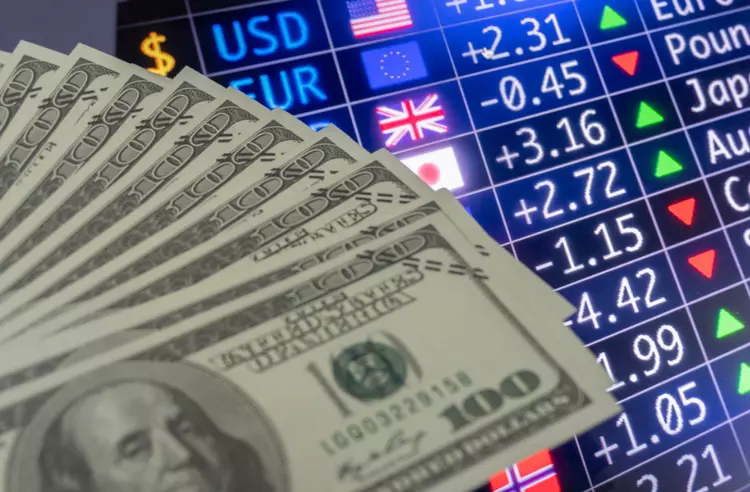In just a few short months, Wall Street’s expectations for the number of interest rate cuts by the Federal Reserve this year have plummeted from 7 to 3, and now, that number may further decline to zero.
Towards the end of last year, despite the Fed’s projection of only three rate cuts for the year due to rapidly declining US inflation, Wall Street speculated on a more aggressive normalization of rates. It anticipated the Fed to cut rates as early as March, bringing the federal funds rate down from the current 5.25-5.5% range to 3.5%-3.75% by year-end.
However, influenced by a series of economic indicators in recent months, the Fed’s first rate cut of the year has yet to materialize, while the market has revised its expected number of cuts from 7 to 3.
Last week, as several Fed officials adopted a hawkish stance and the US Labor Department released robust non-farm payroll data, more and more economists on Wall Street began to anticipate no rate cuts this year.
The Fed Appears Increasingly Hawkish Just this past Friday (April 5th), the US Labor Department published a robust non-farm payroll report. March saw a substantial increase in new jobs in the US, marking the largest gain since May of the previous year. Additionally, inflation data for the first two months of the year remained higher than expected.
In the face of such economic data, internal hawkish voices within the Fed seem to be growing louder. Last Thursday, Minneapolis Fed President Kashkari, often dubbed the “hawk king,” stated that with the US economy performing so well, there was no need for rate cuts:
“If our economy is running so attractively, people are working, businesses are doing well, and inflation is falling, why do anything?”
Fed Governor Bowman expressed an even more aggressive viewpoint on Friday. She suggested that if US inflation remained above the Fed’s 2% long-term target, there might be a need to further raise policy rates this year instead of cutting them:
“Although this is not my baseline expectation, I still believe that if inflation stalls or reverses in the future meetings, we may need to further increase policy rates.”
More Economists Align with “No Rate Cuts This Year” In fact, not just the Fed, but an increasing number of top economists on Wall Street also realize that rate cuts from the Fed may not happen at all this year.
According to Ed Yardeni, President and Chief Investment Strategist at Yardeni Research, investors may finally be considering the possibility of no rate cuts this year. He added that recent oil price increases indicate upward inflation risks still exist.
Other top economists advocating for no rate cuts this year include Mohamed El-Erian, Chief Economic Advisor at Allianz Group, and Torsten Slok, Chief Economist at Apollo Global Management. El-Erian stated last month that due to inflation stickiness, the Fed should wait “a few years” before cutting rates.
Slok warned that the frenzy surrounding AI stocks would make it difficult for the Fed to cut rates:
“We are absolutely in an artificial intelligence bubble, and one of the side effects is that when tech stocks rise, it eases financial conditions. This makes the Fed’s job even more challenging.”
Following the release of the strong non-farm payroll report, the CME FedWatch tool indicates that the market’s probability of the Fed’s first rate cut in June has decreased from 55.2% a week ago to 50.8%. If the upcoming US CPI data on Wednesday (April 10th) again exceeds expectations, this probability may drop below 50% — in other words, the prospect of a rate cut by the Fed in June is increasingly uncertain.
US Bank analysts had previously predicted that if the Fed does not cut rates in June, the first rate cut might be postponed until next year. This is because as the 2024 presidential election approaches, rate cuts in the latter half of this year are unlikely: “If the Fed tells the market that a rate cut in June is unreasonable, then rate cuts later this year will be difficult to justify.”
Can US Stocks Still Rise? However, despite economists’ diminishing expectations of rate cuts this year, they are not overly pessimistic about US stocks. While lower rates theoretically benefit stock prices, in the long run, it’s earnings growth that ultimately drives stock price appreciation.
Currently, amidst robust US economic data, market confidence in US corporate earnings expectations is growing stronger, providing support to US stocks near record highs.
Billionaire investor and founder of Fisher Investments, Ken Fisher, stated that robust employment data fuels optimistic economic growth prospects, and the increasing prevalence of artificial intelligence enhances corporate efficiency, suggesting that even with high Fed rates, stock prices may continue to rise.
If the US stock market and economy can indeed withstand higher rates for a longer period, this would give the Fed more ammunition to cut rates significantly when the next inevitable recession hits — which in the long term, seems like good news for US stocks.